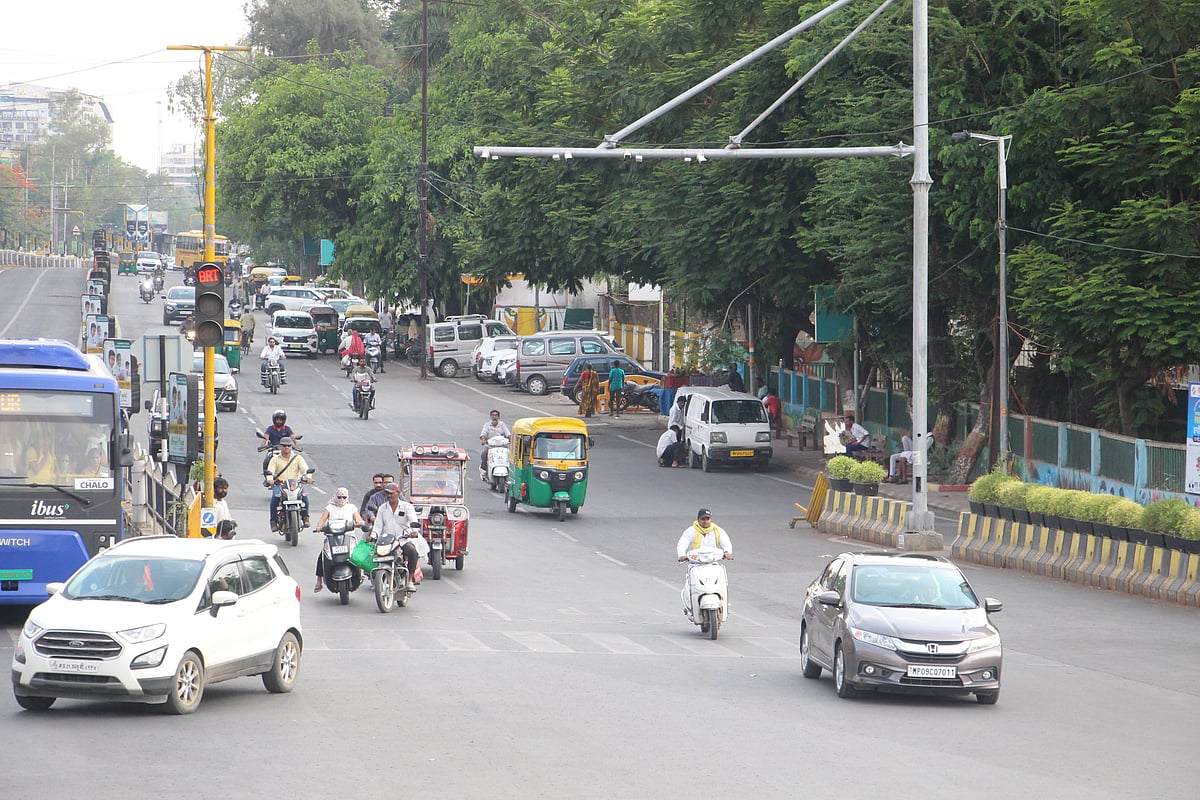Indore (Madhya Pradesh): In bustling cities, like ours, traffic congestion is an incessant topic of discussion among residents. While much attention is directed towards the perceived lack of traffic sense among commuters, a closer look reveals a crucial yet often overlooked factor exacerbating the problem: The deteriorating visibility of Stop Lines and Zebra Crossings at key intersections. These fading markers not only contribute to confusion among vehicle drivers and riders but also lead to inadvertent violations of traffic rules. Despite the issuance of traffic challans against offenders who encroach upon invisible stop lines, there remains a notable absence of action from traffic police officials or responsible authorities from the Indore Municipal Corporation (IMC) to address the urgent need for repainting these essential traffic demarcations at critical trisections
The city's traffic police rely on advanced technology, including Red Light Violation Detection (RLVD) cameras and the Integrated Traffic Management System (ITMS), to enforce traffic regulations. Within our urban landscape, ITMS cameras are strategically positioned at pivotal junctions such as LIG Square, Rasoma Square and Scheme Number 78 Square. However, crucial stop lines at MIG and Rasoma Squares have faded, creating confusion among motorists, particularly during twilight hours when visibility is compromised. Despite these obscured markings, e-challans continue to be issued, capturing unwitting drivers who inadvertently encroach upon the indistinct stop lines. While the traffic police have engaged with IMC's traffic department regarding the urgent need for repainting zebra crossings and stop lines, tangible action to rectify the situation remains pending.

3,000 e-challans daily
ACP (Traffic) Manoj Khatri told the Free Press that ITMS camera challans are issued under the smart city project at LIG Square, Rasoma, and Scheme Number 78. These challans target vehicles for wrong-side driving, red light violations, triple riding, and two-wheeler riders without helmets. Each day, approximately 3,000 e-challans are issued at these junctions. Inspectors and sub-inspectors review the generated challans to ensure vehicle visibility. Additionally, ITMS cameras near the city zoo specifically capture helmet-less two-wheeler riders.

Pintu Namdev
Why challans without repainting stop lines?
Confusion prevails among drivers at various intersections due to unclear or faded stop lines. Both the police and IMC need to address this issue promptly. Repainting of zebra crossings and stop lines is essential before issuing e-challans. Numerous intersections, including LIG Square, Rasoma Square, MR-9 Square, 15th Battalion of SAF trisection, and several squares in West Indore, require immediate attention in this regard.

Pintu Namdev
Why common man bears the brunt?
Advocate Nimesh Pathak, speaking to the Free Press, emphasised the importance of both the traffic police and the IMC maintaining the repainting of zebra crossings and stop lines. He questioned why ordinary citizens should bear the consequences if e-challans are issued for vehicles stopped at indistinct stop lines. Pathak proposed that traffic police refrain from issuing e-challans at intersections where stop lines are not clearly visible. Additionally, he suggested turning off traffic signals between 1 am and 6 am to alleviate unnecessary stops at intersections during low traffic periods.
What they say
DCP (Traffic Management) Arvind Tiwari highlighted the issue of invisible stop lines and zebra crossings at certain intersections. Upon inquiry with the relevant department, officials cited budget constraints hindering repainting efforts. However, they are actively engaging with senior officials to explore potential solutions to address the problem.










